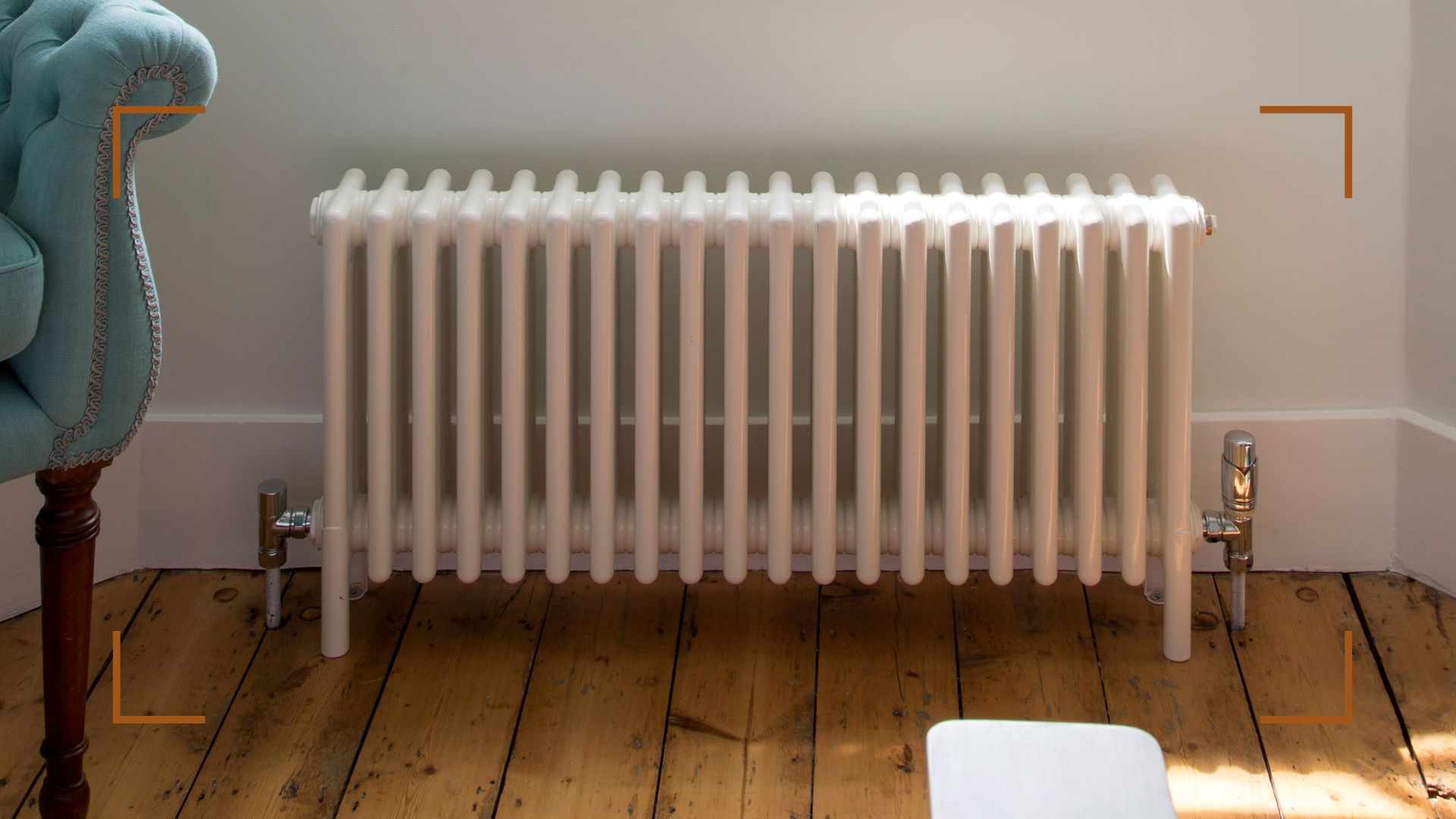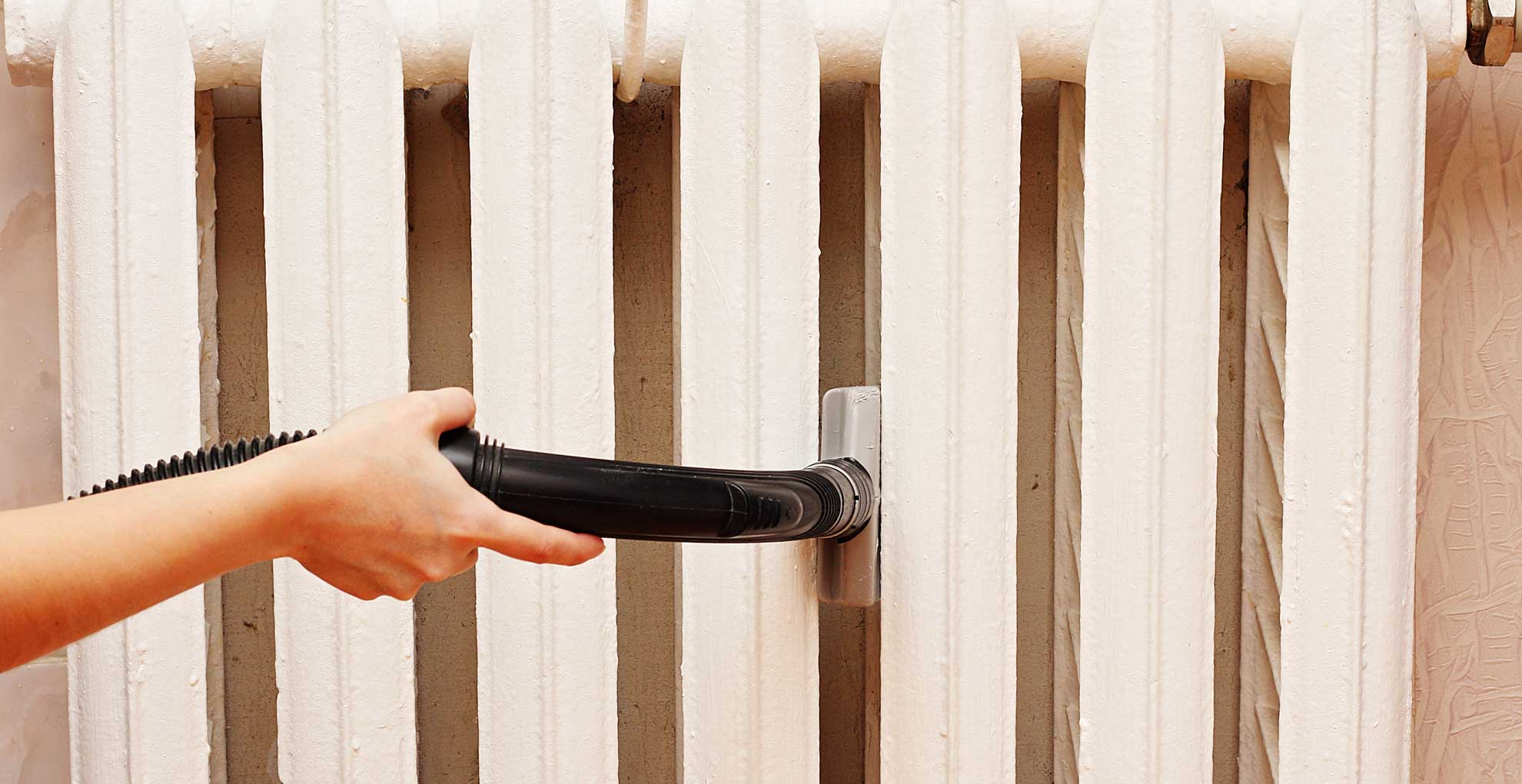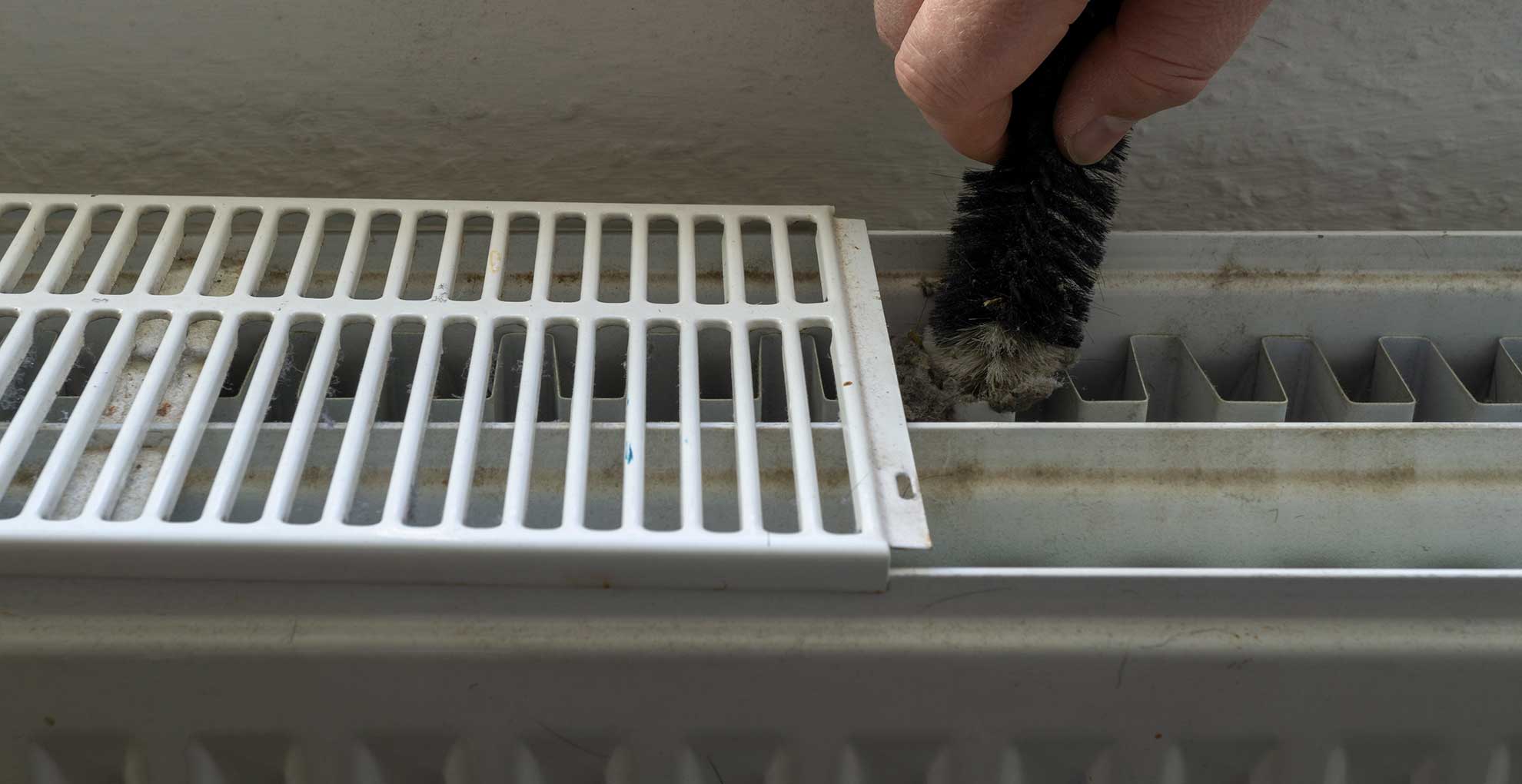How to clean radiators inside and out for better efficiency this winter
Follow our step-by-step guide on how to clean radiators to avoid dust build-ups and help reduce your heating bills

It's important to know how to clean radiators properly so they work more efficiently and therefore reduce heating bills – something that would help us all amid the cost of living crisis.
Many of us are guilty of neglecting our radiators outside of our deep cleaning routines, but it's important to clean radiators regularly. Especially if you want to keep your house warm in an efficient way this winter because dirty radiators can mean higher heating costs.
We've spoken to a range of cleaning and industry experts to get all the information and methodology you need on how to clean radiators inside and out to make them more efficient this winter.
How to clean radiators
"Cleaning radiators should form a key part of your cleaning routine," says Olivia Young, an expert cleaning chemist at Astonish. "They collect huge amounts of dust and it’s often the case that the dirtiest parts of the radiator are on the inside, which is why it’s essential to know how to effectively clean both the inside and the outside of your radiator."
One key thing to remember is not to use too much water when it comes to cleaning your radiator, as this can cause rust to build up.
Sam Whigham, founder of cleaning product specialists Wilton London explains, "Social media is full of viral cleaning hack recommendations, but not all of them are great" (not to mention the viral heating hacks to avoid).
"Recently we saw a tip to wash radiators by pouring soapy water down the middle of your radiator while catching the run-off water in a big tray underneath. We advise against this method. This involves a lot of water and over time could encourage rust."
Sign up to our free daily email for the latest royal and entertainment news, interesting opinion, expert advice on styling and beauty trends, and no-nonsense guides to the health and wellness questions you want answered.
To clean radiators properly, you will need:
- A stick duster: ideally a microfibre one. We recommend the Microfibre Radiator Brush from Lakeland
- Vacuum cleaner
- Hairdryer (optional)
- Gentle multi-surface cleaner
- Dust sheet/old towel
- Cleaning cloth
- A bucket of soapy water
So with this in mind, grab your cleaning products and follow these simple steps to get your radiators clean and working to their best ability.
1. Switch off your heating
Cleaning your radiator with the heating on is not only dangerous in terms of the risk of burning yourself, same as cleaning an oven while it's hot, but it also prevents dust from collecting throughout the cleaning process. So make sure to switch your heating off before you make a start.
"It’s best to start cleaning radiators a few hours after your heating went off so that the radiators are slightly warm, but not hot," suggests Sam. Of course, if you have a radiator cover now is the time to remove that, once it's cooled.
2. Employ your vacuum cleaner

This may sound odd, but getting your vacuum cleaner out to start with is an effective way to get rid of accessible dust on your radiator - much like we would for getting rid of any dust in the home. You can vacuum along the top, sides, and the area below the radiator to remove dust and paint chips that might have fallen off over time.
"To begin with, try and clear as much of the dust from in, around, and under a radiator as possible," advises Jess Steele, heating technology specialist at designer radiator specialists BestHeating."If you have the right attachments on your vacuum cleaner you may even be able to get down and inside the fins."
Advising on the best vacuum for the job Barry Whitehead of radiator specialists Renaissance at Home adds, "If your vacuum has a dusting brush attachment, this may be the perfect time to use it."
Woman&home's Head of E-commerce Millie Fender personally recommends the Shark Stratos vacuum for cleaning radiators because of its dusting brush.

Millie Fender is Head of Ecommerce at Woman&Home and was formerly Head of Reviews across a number of Future Plc's leading Homes titles such as Ideal Home and Homes&Gardens.
As our head of all things shopping, Millie is committed to giving readers honest, expert advice when it comes to spending their hard-earned cash.
3. Lay down a dust sheet or towel
The next couple of steps can get a bit messy, so at this point, once the dust is removed, you should lay down either a dust sheet or a large towel to protect your floors. Make sure the area around the radiator is well-covered with the sheet to prevent any spills or mess.
4. Use a stick duster

While it's a good idea to invest in a radiator brush for this step, a stick duster also works well – try and use a microfibre one if possible, for more flexibility. You can dust and clean walls at the same time as dusting the radiators.
"Start by spraying the stick duster with a multi-surface cleaner until it’s lightly damp," advises Sam. "Now, with the moist duster dip it down behind and inside your radiator from top to bottom. The duster will pick up the dust and the multi-surface cleaner solution will clean any muck without getting the radiator too wet."
Repeat this on each section of your radiator until you have cleared most or all of the dust away. "If the duster gets too dirty, wipe it with another microfibre cloth to remove most of the dirt. Then spray and dip again until the duster comes out clean." Sam adds.
5. Grab a hairdryer
For any remaining dust, using your best hairdryer is a really effective way of blasting those stubborn bits away.
"It may sound simple, but a hairdryer is good at getting dust out from the inside and down the back of a radiator," Jess explains. "Point the nozzle of the hairdryer into the grooves at the top of your radiator and turn it up to the highest setting. That should get a lot of the leftover dust down and out from in and behind your radiator."
6. Wipe with soapy water

Now the inside of your radiator is clean and dust-free, it's time to clean the outside. Simply grab a bucket of soapy water and a clean cloth or sponge, remembering not to get the radiator too wet.
Nic Auckland from Trade Radiatorsexplains how being gentle is key for this step. "Avoid using abrasive scourers or household detergents, as they can damage the surface of the radiator," he says.
Clean around the values and heating setting dials to ensure the entire outside casing is well-cleaned and dust-free.
"Make sure the cloth is damp and not soaking wet to avoid trapping water in crevices and causing discolouration or rust. Use a dry, clean microfiber cloth to remove any excess water once finished." Think similar to cleaning hardwood floors to avoid any damage, just enough – not too much water.
FAQ
What's the best thing to clean radiators with?

While there are many ways to clean radiators, the best thing you can use to clean your radiator is a proper radiator brush. "These brushes are designed to get in all the nooks and crannies of radiators, ensuring that everywhere can be reached properly," explains Nic.
Cast iron radiators and bathroom designs are easily accessible as they are, however, if your radiator features a casing it is advisable to carefully remove this to perform a deep clean. This will ensure the brush can tackle every nook and cranny with ease. You can of course simply poke the brush through the gaps of the cover when tackling your weekly dusting chores, to make the task easier and quicker.
A multi-surface cleaner will also do a great job of cleaning your radiator without getting it too wet, which can be a problem that results in damaging the metal. Simply spray a small amount of multi-surface cleaner onto the brush to dampen it, before using the steps mentioned above to get great cleaning results.
What can you use to clean the inside of a radiator?
As well as using a radiator brush to clean the inside areas of a radiator externally, it is also advised that you get a professional to flush your radiators once a year to ensure the internal inside remains clean too.
"To clean the inside of a radiator you will need to get a professional plumber to power flush your heating system," advises Nick Duggan, director at The Radiator Centre. "This will remove any debris that might have built up and should leave you with a more efficient heating system."
And Simon Morris, marketing manager at The Radiator Company adds, "To clean out the actual inside of the radiator, the only way is to add an appropriate inhibitor to your central heating system which, when pumped around, will keep sludge build up to a minimum. Your plumber should be asked to do this annually at the service check of your boiler and system."
Does cleaning radiators work?
One of the easiest ways to make your heating more efficient is by cleaning radiators to keep them dust-free. The dust and dirt that collects on radiators over time not only look unsightly but can also affect the efficiency and heat output. Therefore, cleaning radiators works to keep your energy bills down by maintaining a more efficient heating system. Ava Pope an Energy Saving Expert at Love Energy Savings explains, "A heating system which is dirty can increase your energy bills by as much as 25 percent." Simply keeping them clean ensures they work better, not harder to provide optimum heating capabilities throughout the house.
Will white vinegar clean a radiator?
Cleaning with vinegar can be used as a natural solution to clean a radiator and it's also great for neutralizing odors - but only use white vinegar in moderation and on a chrome radiator, otherwise, it can make the metal rust.
Nic says, "White vinegar can be used to clean chrome radiators. It also helps to remove rust from chrome radiators. However, I don't recommend using it on other types of radiators, as the acetic acid in the vinegar can make the metal rust."
Follow Nic's step-by-step guide on how to clean chrome radiators with white vinegar:
- 1. Prepare the cleaning solution: Mix equal parts of white vinegar and water in a spray bottle.
- 2. Spray the solution: Spray the solution on the surface of the radiator, making sure to cover all areas
- 3. Wait for 10-15 minutes: Let the solution sit on the radiator for 10-15 minutes to allow it to loosen and dissolve the dirt and grime.
- 4. Scrub the radiator: Use a soft brush or sponge to scrub the radiator, paying extra attention to any stubborn spots.
- 5. Rinse with water: Rinse the radiator with a damp cloth to remove any residue from the vinegar solution.
- 6. Dry the radiator: Wipe the radiator dry with a clean, microfibre cloth to avoid any water spots.: Use a soft brush or sponge to scrub the radiator, paying extra attention to any stubborn spots.

How often should you clean radiators?
While we may know how often you should clean your house, there is no set rule on how often you should clean your radiators, as with how often you should vacuum or how often you should clean your oven, but in order to avoid dust build-up, radiators need to be deep cleaned several times a year.
"It’s surprising how easily radiators collect dust and grime," says Sam. "In a quieter household, twice a year should keep the dust at bay. But if you’re a busy house with pets, I would tackle the radiators every 3 months to help them stop pushing dust and particulates around your home. I always give them a clean at the end of summer to avoid that weird burning smell when you turn them on after their summer hiatus."
Jess added, "Dust in between the fins of a radiator can prevent heat from escaping, so it’s important to take the right measures and thoroughly clean radiators at least once a year, keeping on top of any dust that builds up. Incorporate it into a weekly or monthly cleaning routine will also be beneficial, and mean that a big clean between the fins will require less effort."
So next time you're cleaning the TV screen or cleaning the windows it might be worth considering giving your radiators a quick dust at the same time, to prevent a further build-up of dust.
With a master’s degree in chemistry, Olivia works in the on-site lab testing and trialling products to ensure they work effectively and smell amazingly. Astonish is a proud pioneer of animal-friendly products and is still the only UK-manufactured household cleaning brand that is approved by Cruelty-Free International and The Vegan Society.
Robyn is a celebrity and entertainment journalist and editor with over eight years experience in the industry. As well as contributing regular to woman&home, she also often writes for Woman, Woman's Own, Woman's Weekly and The Sun.